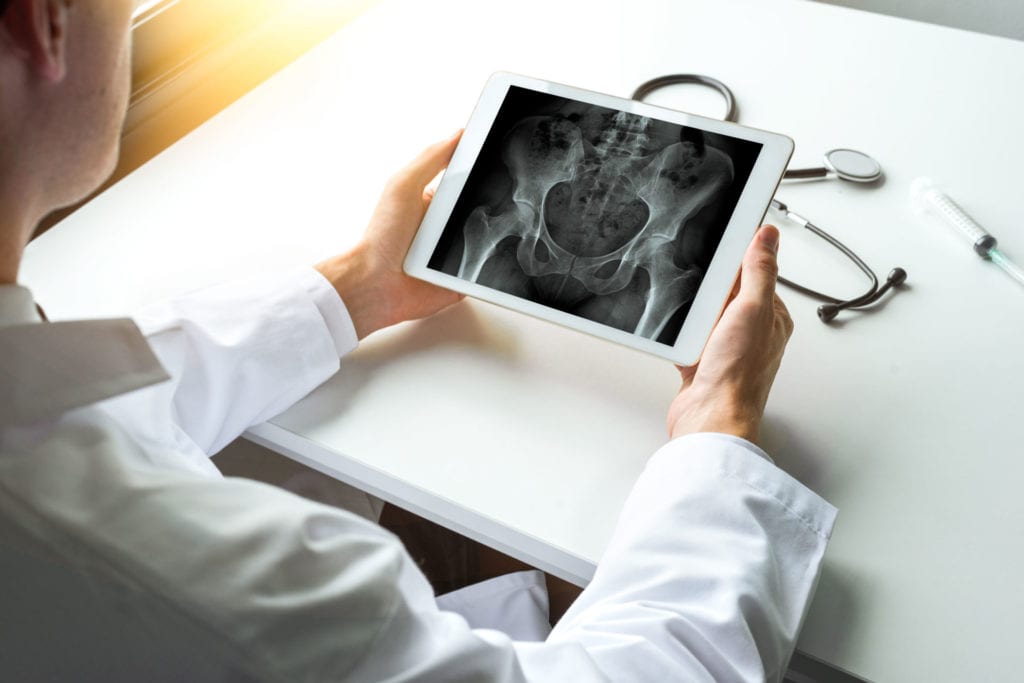Femoroacetabular Impingement
You might take your ability to take a walk through your neighborhood or climb the stairs of your house for granted. However, when you experience persistent hip pain and reduced mobility of this essential joint, the impact can be life-changing. Hip pain can originate from a variety of causes. Identifying the issue is the first step in seeking treatment that can provide long-lasting results. The Orthopaedic Institute of Ohio diagnoses and treats a wide range of hip problems, including a potentially debilitating condition known as femoroacetabular impingement.
Anatomy of the Hip
The ball-and-socket hip joint consists of the femoral head (ball) and the socket, which forms a portion of the hip bone known as the acetabulum. Cartilage covers both components, eliminating friction and ensuring smooth, painless motion of the joint. Strong fibrocartilage known as the labrum encircles the acetabulum, maintaining a tight seal that offers stability to the joint.
What is Femoroacetabular Impingement?
Femoroacetabular impingement, also known as hip impingement or FAI, is a condition that consists of bone overgrowth on one or both the joint components. The extra bone leads to abnormal contact between the bones of the hip, which can cause damage to the labrum and cartilage. FAI is categorized into three different types:
- Pincer Impingement – bony overgrowth at the rim of the acetabulum
- CAM – damage to the femoral head so it cannot move smoothly
- Combined – irregularities to both the acetabulum and femoral head
Symptoms of Femoroacetabular Impingement
FAI can present with different symptoms, including:
- Pain in the inner hip or groin area, particularly after walking or sitting for long periods
- Difficulty performing daily tasks like putting on shoes and socks
- Pain in the back of the hip, buttocks or lower back
- Clicking or locking sensation when the hip joint moves
- Stiffness or reduced mobility in the joint
Since the problem often develops during childhood or the teen years, active individuals might notice the symptoms earlier. However, it is important to note this is a developmental condition and is not caused by exercise.
Treatment Options
Once femoroacetabular impingement is diagnosed, which is usually done through medical imagery like x-rays or an MRI, treatment options can be explored. In many cases, the first treatment approach is conservative, consisting of rest, physical therapy and behavior modification to reduce pain and allow for healing of the joint. Anti-inflammatory medications are often prescribed as well.
When conservative treatment is not sufficient, surgical intervention may be the next step. In many cases, the procedure can be performed arthroscopically, which is less invasive than traditional hip surgery. The technique uses a device called an arthroscope, which allows your surgeon to “see” the hip joint without using a large incision to open the full area. The arthroscope features a camera that projects images from inside the hip to a screen so you surgeon can identify the source of the problem. The procedure also allows for correction of femoroacetabular impingement in most cases.
Overview of Hip Arthroscopy
If your surgeon recommends hip arthroscopy, it will be performed under general anesthesia or regional anesthesia with sedation. A tiny incision is created to insert the arthroscope first so that the surgeon can pinpoint the issue. Once a diagnosis is made, additional instruments can be inserted through other small incisions to remove the bony overgrowth and create a smoother joint that allows for easier, more comfortable movement of the joint. Most of the time, this procedure can be performed on an outpatient basis, allowing you to return home later the same day.
Recovery from Hip Arthroscopy
For the first two weeks, you will use crutches to avoid placing to much weight on the joint. Any discomfort can be managed with medication, and we will offer postoperative instructions to help you care for the hip as it heals. You will have supervised physical therapy during the recovery process to help restore strength and mobility. Patients are typically back to regular activities within six weeks.
If you are suffering from persistent hip pain, help is available. Contact the Orthopaedic Institute of Ohio today at 419-222-6622 to schedule your initial consultation.

